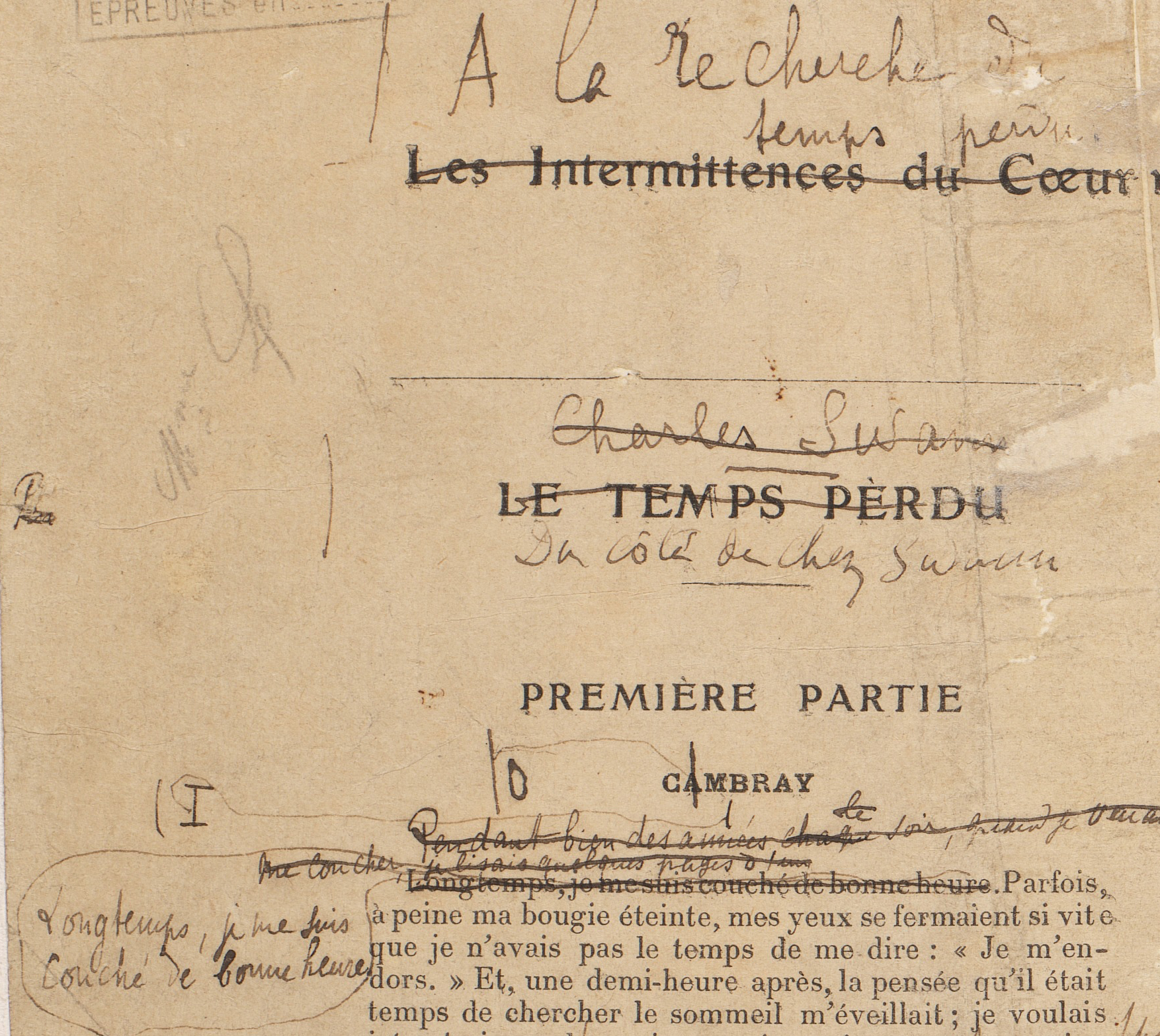Digitalisation reveals the secrets of autograph manuscripts
Volunteer students from UNIGE Faculty of Humanities retrace the life stages of manuscripts from their origin until their purchase by Martin Bodmer.

First page of the autograph manuscript of Proust’s A la Recherche du Temps Perdu with the re-written first sentence. © Bodmer Lab
Nearly 500 French-language manuscripts are kept in the Martin Bodmer Foundation. Until recently, they had never been available to researchers and the wider public. They have been digitalised by the Bodmer Lab at the University of Geneva (UNIGE), Switzerland, and now form part of a vast research project. Over 50 student volunteers have taken part in it over the last two years. This research aims to analyse the creation process behind every document, contextualise it and gain access to an additional way of interpreting the texts.
Analysing a manuscript helps to deepen our understanding of the author’s work process: his or her doubts and repeated attempts to find the right word or phrase are made visible and become concrete. Marc Adam Kolakowski, research assistant at the Bodmer Lab and co-director of the Autograph Manuscripts project, explains: “Reading the text written by your favourite author in his own hand, retracing the genesis of a novel or theory, following the writing process and journey of a historical or love letter – that’s what digitalisation is all about, as well as putting these exceptional documents online.”
Getting up close and personal with the writing
Making the manuscripts freely available online on the Bodmer Lab website will enhance the ways the documents can be read. Henceforth we will not only look at a text’s “definitive» (printed) version but also at the successive stages in its development and its different “states”.
For example, we can see that Proust’s initial title for A la Recherche du Temps Perdu was Les Intermittences du Cœur. And that Proust hesitated over and re-wrote the book’s famous opening sentence many times before deciding on its final form. Whereas on the printed page we read: “For a long time, I used to go to bed early (Longtemps, je me suis couché de bonne heure)”, the manuscript shows us that Proust crossed the sentence out, replacing it with: “For many years, every night, when I had just gone to bed, I used to read a few pages (Pendant bien des années, chaque soir, quand je venais de me coucher, je lisais quelques pages)” before scratching it out again and re-writing the original “Longtemps, je me suis couché de bonne heure”. In the case of Paul Verlaine, an entire stanza of his Poèmes Saturniens has now been saved from oblivion.
“It’s a unique opportunity to have access to these manuscripts,” says Pauline Brandt, a master’s student in French language and literature. “It’s a way of putting into practice what we’re studying in class. We come face-to-face with a writer or well-known literary work and get up close to their writing. It’s exciting to have a way into the details – where they’ve rubbed things out or made corrections as well as small creases and marks – all the things that disappear when the text is published.”
Work carried out by the students
For the past two years, some fifty students have been working on the autograph manuscripts on a voluntary basis, preparing descriptive notes that will accompany the original documents online. These studies may raise fundamental questions, especially regarding the problem of a work’s authenticity. This is why the students are trying to trace each stage in the life of the manuscripts, from their creation until the moment they became part of the Martin Bodmer collection. To do this, they look for various editions of a text and “network” the manuscript, allowing comparisons between versions and an evaluation of an author’s work from multiple perspectives.
Studying a manuscript can take a few days or several months. “Just a simple note in pencil can mean that you ferret about for hours and hours trying to understand the development of the manuscript and the importance the note had for its author. It gives a new perspective on the literary document,” says Elsa Nguyen, who is continuing her work on the manuscripts after completing her university studies. For example, the analysis of a letter by Corneille made it possible to reconstruct its journey, despite its numerous owners (over a dozen), from the Jesuit library in the Collège de Clermont in Paris (where it was deposited at the end of the 17th century) until it was acquired by Martin Bodmer in 1967.
Martin Bodmer’s autograph manuscript collection
Martin Bodmer’s Autograph Manuscripts collection consists of over 2,000 unique works, mainly from the Zweig Collection acquired in 1936. Martin Bodmer always maintained the unity of his holding, expanding it in line with the principles set out by the famous Austrian writer.
About the Bodmer Lab
The Bodmer Lab, initiated in 2015, is a research and digitization program of the University of Geneva that examines and makes available online significant parts of the holdings of the Fondation Martin Bodmer in Cologny (Geneva), employing methods and tools of the digital humanities. More than 20 aca¬demic researchers and 40 volunteers contribute to the research, digitization and publication activities. The mission of the Bodmer Lab is to create digital archives of World Literature, based on the Bodmer Collection, and to facilitate access to, and use of, these archives for the broadest possible public.
